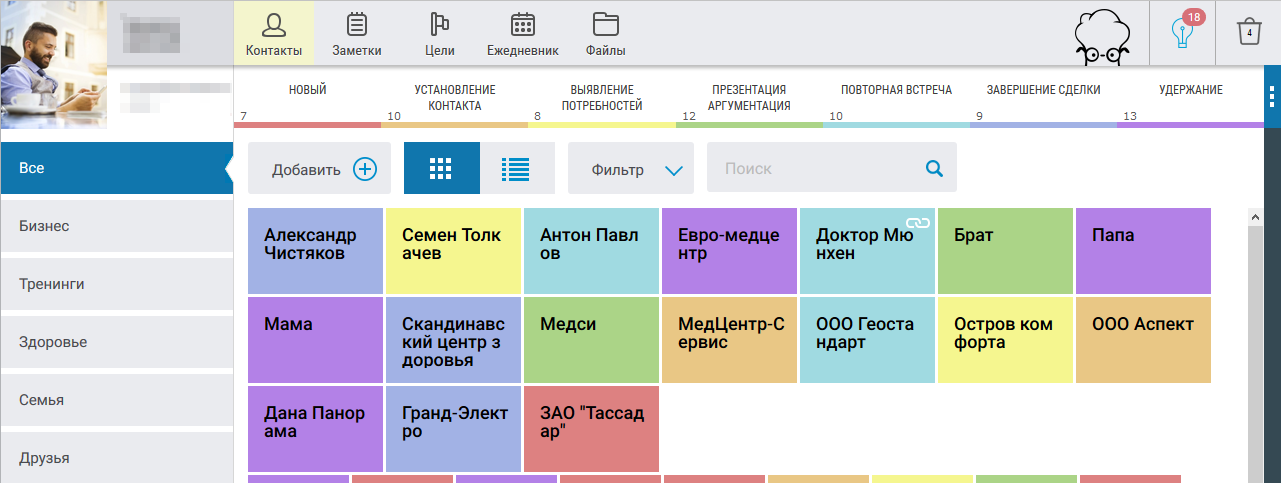Career, commerce and project / task management in questions and answers at the Toaster
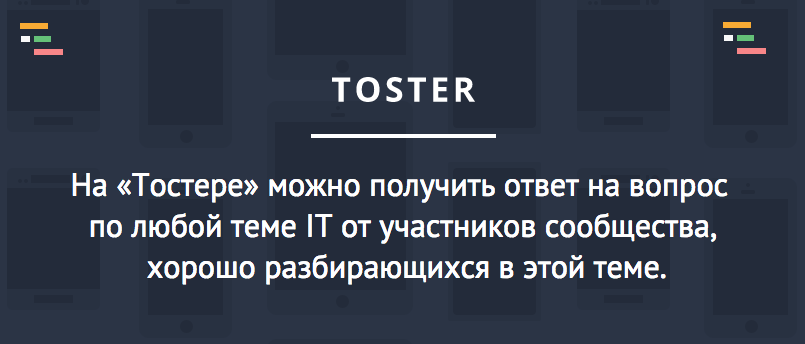
Especially for the readers of “Megamind”, our editorial board decided to collect and summarize in one place the most interesting questions across the whole range of topics related to our resource for the last calendar month - March 2016.
It turned out a lot of them, as well as answers on the most acute and topical issues posed and resolved by users of the community.
Want to find out what is being asked on the “Toaster” and how to answer questions in the field of business, career and project management?
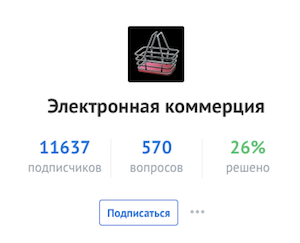
Section "E-commerce"
Interest Ask:
')
- “What international payment system to connect to the site?”
Advise the payment system for the site, which does not try to climb into the territory of the Russian Federation as paypal. Jur. international face.
Will only receive plastic.
Currently, the prerogative of considering SCRILL and post on Habré added endorsements. She has a true nuance:
Important note: Skrill has restrictions in the United States, where the activity of this system is blocked under the pretext of its use for gambling. Such is the typical pattern of international competition.
Therefore, I am looking for a decent option for the states.
Stripe considered? I have no experience with them yet, just exploring the possibility of cooperation.
Better to PayPal from foreign countries have not yet met, and you can still look in the direction of bitcoins
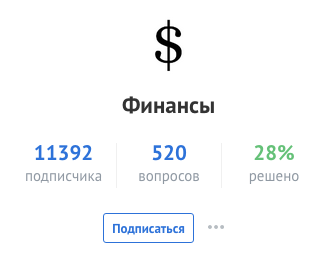
Section "Finance"
Interest Ask:
- “Should our company pay taxes for the users of our Internet service?”
We are developing an online service for buying and selling digital freelancing services, such as fiverr.com
The buyer orders the service from the seller and pays the money, the amount is delayed on the account of our company. After receiving the order, the money (minus the service commission) is transferred to the account of the seller of the service.
Question: Do we have to pay taxes for the income of each seller?
For example, projects such as boomstarter immediately deduct the amount of tax from people collecting money and pay them for them to the state (when creating a project, they request TIN data).
What should we do in our case?
You think in what jurisdiction you are going to work and go to a lawyer and an accountant in that jurisdiction.
The question is what kind of service you will provide. Those. Payment of taxes for the client is part of the service. You can either do it or not. If my memory serves me, then Ebay and some freelance exchanges that hold money, while checking the transaction, do not pay taxes for the seller.
Not. You must pay taxes only for yourself.
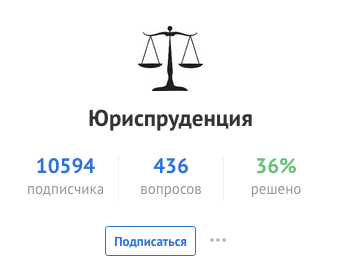
Section "Jurisprudence"
Interest Ask:
- “Copied the design for the Upwork order, when the riot police come?”
By ordering on the site I copied the design of the site of a famous messenger (American) by request of the client (judging by the time zone, located in the region of China + 4-5 thousand km), copied everything, translated only the text, what will I get?
Minus in karma.
You, just nothing.
Theoretically, your customer may be sued, but this will again be his problems, not yours.
And that is unlikely.
Further and continue, go down to the bottom, with you, no adequate client wants to deal with. Riot police will not come for you, do not worry. Just the people around will not respect you.
Decide whether reputation or a couple of extra bucks is important to you.
design who owns and who will distribute it? So that will be fined

"Copyright" section
Interest Ask:
- “What kind of license allows you to score at all?”
So that the end users of my product can use it as you like, anywhere, and not save any copyrights.
Public Domain - public domain. Anyone can do anything.
ru.wikipedia.org/wiki/WTFPL
Do you want a public license (WTFPL)

Section "Internet advertising"
Interest Ask:
- “How is the cost of advertising on the site calculated?”
Hello.
Plz tell me how to calculate the cost of advertising on sites? In prices it is written (for example on Habré) - 400 rubles for 1000 impressions. Do I understand correctly that 1000 impressions are a 1000 times generated web page (it doesn’t matter on the same machine that was generated (it was generated, did not come from the cache)) or did different users go to the site?
Or how does it work?
Thank.
the twist of Habr tries to show different advertisements to one user (it is understandable, audience coverage, CTR / PM / ROI is higher)
but
if there are few advertisers, and the user is watching a lot of pages, he will see your banner several times
these are several times and there are several shows, 1000 of which cost 400 rubles
The number of impressions is the sum of 2 parameters, one of which is not checked:
1. The number of real impressions
2. cheat
For example, real: 100, cheat: +300, in your report: 400, written off: 1000r.
(also, there is a cheat limit, it is also calculated!)
The parameter to be checked is only a weighted average conversion: i.e. The percentage of return from funds spent over a specified time interval under equal conditions of publication.
For “rough” conversion checks (on the same site) - usually 2 weeks are enough, but to get a complete picture of the “return” from the site - it is better to use 4x2 (four seasonal time periods of 2 weeks each).
For reliable services - the minimum ordering period for advertising: 2nd week.

Section "CRM"
Interest Ask:
- “How to choose CRM for a small WEB team?”
Hello,
faced with the need to start doing business in a more orderly manner. From current needs we have (below).
The question is, what are you using? What can you advise?
- a note book with customers (contacts, notes about them, from which company)
- the ability to track which orders for the work from the client have been, what their status (paid \ not paid)
- the ability to add not only the cost of a client, but also his own cost, to understand how much margin there was
- statistics on clients and jobs
- ability to sort works by date, type of work
- WEB solution
Using Planfix, you can customize it for any needs.
+ Your requirements are now modest, but in the future they will increase, so it’s better to immediately choose a service / program with more features.
Bitriks24, of course, possible, but would not recommend. onlyoffice seems to be a slightly different product, but it may work. But amoCRM and Trello, by the way, can help a lot. I would also run here , but, again, it all depends on the process of working with transactions. Perhaps you should ask your business colleagues, maybe someone already uses the clouds, they know a good CRM;)
There is such a solution. Simple business , at first glance, fits your requirements completely: the history of letters, calls is stored for each client separately, again, set reminders, alerts, etc. WEB solution is
A lot of things tried. As a result, we stopped at Amocrm for transactions + Trello for regular customers. Friends with each other
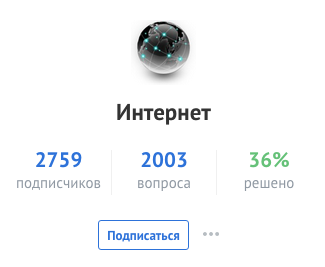
Section "Internet"
Interest Ask:
- “Is there a system capable of recognizing and blocking obscene pictures when they are uploaded to the site?”
There is a real estate ad site.
Users are free to upload pictures. There is no admin, verification is not conducted, that is, hypothetically, someone can put an obscene photo and it will appear in the catalog. Is it possible on the fly to use some kind of plugin or tool that recognizes the downloadable pictures and checks them for the element, at least, of course?
"Nudity detect" look, there are different languages, for example
www.patrick-wied.at/static/nudejs
If you just do:
1. We are looking for color ranges and closed areas (with an area of at least specified) skin tones in the photo.
2. When the threshold is exceeded - we believe that there is a naked body.
If done correctly:
We use the contour and color segmentation of the image and the neural network, followed by gradual learning: where are decent photos and where are not.
For the first time (as long as false positives are possible, because the neural network is still not sufficiently trained), the most active users can be given voting rights if the filter is successfully passed.
The percentages of the decent image ranges (with the number of voters> = 5):
1. From 0-33% - we eliminate
2. From 34-66% (inclusive!) And voted ALL, who can vote -> moderation to the administrator (this case is very rare)
3. From 67% or more -> skip (image is normal)
Most recently released service from Google
cloud.google.com/vision
See the Detect Inappropriate Content section.
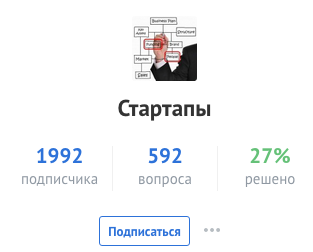
Startups section
Interest Ask:
- "How to test the idea of a startup without high costs?"
Following the path: wow, others are doing projects, I will make a project that I like and become rich and popular, but in the end half a year is spent, some of the funds and not a single client is attracted, so by what means can you check the viability of the project?
Lean method
Principles of lean-techniques, explaining how to create a product, spending a minimum amount of resources, you can learn from the classic work of Eric Rice The Lean Startup. In it, he, among other things, talks about how to test the viability of ideas. Rice is obsessed with mini-checks and iterative moves. The very first test of an idea should prove not only that your product is interesting to buyers, but also that they will be willing to pay for it. Even before the creation of the minimum version of the product (MVP), he advises to place on the Internet a simple landing page, which is referenced in advertisements. On the page there should be a brief description of the product and the "Buy" button. You can make many options for landing pages, varying the price and essence of the proposal. After collecting statistics, you can already begin to develop a prototype. This principle Rice calls: "First ask - then do." To test ideas, followers of the lean method also often use The Validation Board, a free product that is a lined board, each part of which is an important element of a successful startup idea.
Disney Test
Walt Disney used in his work the method of testing ideas, which he called Imagineering - the average between imagination and engineering (Eng .: imagination and development. - Approx. H & F). By this he meant the process of “grounding” fantasies, turning them into something realistic and possible. Work on the idea required consideration of it from three different positions: a dreamer, a realist, a critic.
The dreamer is full of various ideas, desires, images and does not meet any obstacles on his way. At this stage there is no censorship, nothing is considered too absurd or stupid, anything is possible here. To take the position of a dreamer, you can ask yourself: “If I had a magic wand, what would I do?” The realist transforms the ideas of the dreamer into something practical and probable. He asks questions about how to make it work, what parts the task consists of, what is its meaning, what is it similar to already existing. The critic considers ideas from the point of view of their shortcomings. He asks the questions: “What am I really thinking about this? Is it really the best option of all? What can I do to improve this? ”
At the Disney Company, teams worked on ideas, moving from room to room in stages. Each room had its own function: in the first - it was possible to fantasize, in the second - to create sketches, in the third - it was allowed to criticize furiously. Often, the project again returned for revision to the first or second room. The idea was considered accepted when in the "room of critics" no one said a word.
First mile test
The founder of Innosight, Scott Anthony, in his book, The First Mile, writes about how his company usually tests ideas for strength. First of all, they conduct a careful analysis of what has already been created in this area, study the experience of competing companies, and verify patent applications. Then they arrange a mental experiment, answering the questions: “What will the world look like if the idea is waiting for success? What will change in it? Which companies will compete with us? What problems can we face? What, for example, will we do if our main developer leaves us? ”The third stage consists in building an monetization model“ by eye ”: you need to determine what size the potential audience of the future product will be, how much it will cost, how often it will be bought, how long it takes to reach the break-even point.
The fourth stage is associated with calls. Anthony says that often the success of an idea is associated with the existence in our mind of some assumptions, ideas about how the world works. You can check them by simply making one call. For example, if your idea is to deliver healthy lunches to universities by making one call, you can find out that such issues are usually resolved through a tender that takes place every three years. The next step is to get some evidence that consumers need your product. It can be a “coffee test” when you ask your friends to honestly tell you what they think about your idea, in exchange for what you pay for their coffee. This may be a “cold” survey on a database of potential customers or a survey made using SurveyMonkey.
10 second test
Janet Kraus now teaches at the Harvard Business School, and before that she founded several successful companies (among them Circles and Spire). She tells her students about a 10-second test, which she uses every time she gets a startup idea. She asks herself the question: is this idea Oxygen, Aspirin, or Jewel for potential customers?
Oxygen is related to products that are an essential vital need, like food, clothing, funeral services. Needs can be from individuals as well as from organizations. In general, this is something without which they can not function normally. Aspirin is something that saves from pain and makes life more bearable, although not related to immediate survival. For example, coffee - life without it is possible, but not so pleasant. The term "jewel" refers to products and services that can be considered a luxury, a surplus. For example, desserts, movies, video games and other pleasures associated with relaxation. Kraus says that a really good startup idea should satisfy all three requirements. And the main thing in this test is to be honest with yourself and quickly recognize that
Edison way
Thomas Edison left 1093 patents, among which were such inventions as a light bulb, a typewriter, a phonograph, a battery and a movie camera. Also, after him, there were 3,500 notebooks in which he obsessedly wrote down every thought that occurred to him. Researchers who tried to understand the secret of creative productivity of Edison, identified several features of his method of working with ideas. Edison's first rule is quantity. He set himself the so-called quotas for inventions for himself and the employees of his company. His own quota was: one small invention once every ten days and one big invention every six months. To test this principle for yourself, imagine that you are asked to come up with all the ways to use brick alternatively. On average, an ordinary person offers six to eight options. Now imagine that you were given the task to come up with 40 ways to use bricks. Thanks to the given quota, your head will start working differently.
The second principle - for Edison there was no such thing as an unsuccessful experiment, in his view all these “attempts and errors” were ways of gaining useful experience. To invent the battery, Edison conducted about 50,000 experiments. For a light bulb - 9,000. After each failed experiment, he wrote down what he learned about the subject. He perceived the process of creativity as hard, monotonous, honest work. In his opinion, the first ideas are always weaker than the next ones, because first you start from things you are used to and they hold back your imagination.
The third principle is to never rest on our laurels, constantly improve ideas and experiment with their application in various fields. The Edison Museum has preserved a huge number of phonograph options: round, square, wooden, flat and high. All this - the results of rejected ideas. When Edison was once asked what the secret of his creativity was, he replied: "Never stop working on the subject until he starts working himself."
Landing page + social network groups
Viability is tested on the free version, testers are invited. You have written almost nothing. Maybe you have a monthly fee of $ 1000 and you are surprised that not a single customer.
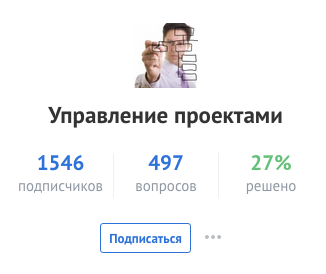
Section "Project Management"
Interest Ask:
- “Do project managers take people with manager education?”
Good day.
By education: manager of a tourist destination (i.e. organization of work of hotels, restaurants, casinos and tour companies).
For work: web developer.
I talked with HR, she explained to me that without formal education (technical), the road to more or less large companies, team leads, scrum managers, and so on was closed to me. She said that in general it will be possible to try for the position of product manager or something in this regard.
Who has experience or knowledge. Will such an education be a plus for a product manager position or is it better not to go without a technical one?
You can safely answer HR manager that his place is maximum in the buffet. I'm serious.
Not one HR manager in a large company, for the position of a team leader does not require / ask for education at all.
In the IT field, only experience, knowledge and the person is important.
I am a team leader, and many of my acquaintances who work on managing teams or projects do not even have a full secondary education (for example, I have 9 classes and a vocational school - I’m 4 classes and have not studied in the next 20 years.).
Example wb.ru / mail.ru / arndb - in these companies work familiar with 9 or 11 classes of education, without VO, in the positions above described.
Well, another friend, has 2 higher specialized education and it is not taken as a stupid programmer except.
Since little experience and knowledge. To kill 10 years for training and by 30 years to work for pennies, this is our reality.
Well, no, not closed.
Difficult.
The skill of technical management is completely different.
Not to mention that the tourism manager is not a manager at all (not a manager), but simply “an expert in some aspects of the tourism business.”
Well, here is an example for a project manager:
do you know at which points to control the process by Agile?
Do you know how to integrate Trello with Slack (this is setting up your working tool, this is not necessarily the work of a sysadmin)
Do you know the difference between devops and developers?
Who are the juniors and the better they are seniors, and the worse?
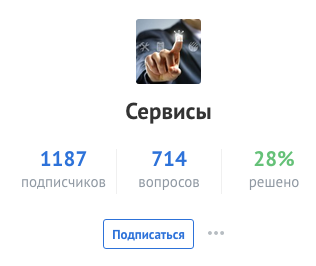
Services Section
Interest Ask:
- “Tell us about video broadcasting services?”
I am looking for such a service so that users can join by video link.
It is desirable that the service was free.
The simplest, free and convenient solution:
Create a conference in skype, set up OBS (open broadcast) (make several screens there (yourself on the webcam and the second - skype window, switch between them when needed). Then attach your stream to twitch, for example.
As an option - google hangouts (but tried to use 1.5 years ago, there were lags and glitches, as now - I do not know).
You can try through youtube, although he has a bunch of hangouts too.
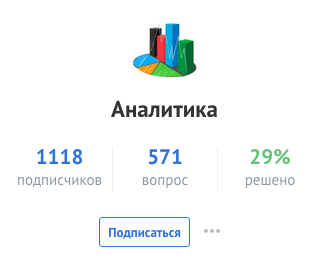
Section "Analytics"
Interest Ask:
- "Site Statistics: What is the proportion of the width of the screens of mobile devices?"
Tell me where you can see the most reliable summary / statistics / analytics of users' visits to all sites from different devices. Interested in the growth rate of the percentage of mobile screen widths relative to desktops over the past few years. It is desirable for Russia and the world separately.
And if in more detail, what is the growth in the percentage of purchases of goods online from mobile devices from sites and applications?
To determine how urgently you need to make an adaptive mobile version in online stores or still only 10-15% of users will make a purchase or order paid services with online payment from a mobile device, at least for 2015.
Permission statistics from w3schools.com
1) the adaptive mobile version is everywhere from April 2015 and February 2016 (in the Russian Federation)
2) globally, the number of mobile traffic can be estimated from the same similarweb, on average, around 30% of sites (in messengers, of course, higher), which, of course, is higher than 15-20% in 2014
3) specifically by devices - counters, small ones can search, from large ones:
gs.statcounter.com
www.liveinternet.ru/stat/ru/browsers.html - only here xs like with the division into mobile
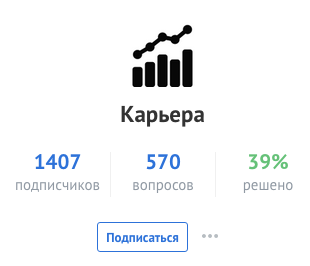
Career section
Interest Ask:
- “What type of projects should be done for a web developer portfolio, to a Junior position?”
Good day!
I have a question for you:
What type of projects should be done for a portfolio of a web developer, to a Junior position, so that it is stylish and modern.
And not just a regular business card site, or one-page. =)
And what technologies should be used to make a favorable impression.
So far I only own HTML, CSS, basic JS + jQuery, Git.
In the process of writing projects I am going to pull up what's needed and get into
Preprocessors (SASS, coffescript)
SS / JS Framework (Bootstrap, AngularJS, Backbone) later
Project builder (Gulp, Grunt)
SPA on native JS
It's not 2012 now, so definitely not CoffeeScript, not Grunt, and not Backbone.
It makes sense to do something on the React or Angular 2 - they are now in a trend and will come in handy anyway.
From technologies - if possible, then Webpack and EcmaScript 6 (via Babel)
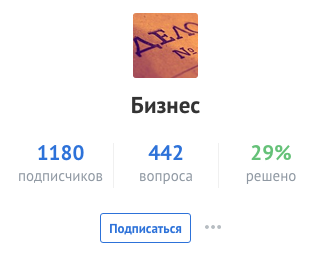
Section "Business"
Interest Ask:
- “What is the most profitable bank for a current account of a freelancer?”
Hello!
I am looking for a bank according to the following criteria
1) no subscription fee for months in which there are no turnovers on account
2) minimum commission for withdrawal / withdrawal
3) minimum commission for currency control
4) adequate currency control
5) no hidden or unnecessary payments to freelancer
Thank!
Alpha or Point.
In the first, people are more satisfied, in the second they are somehow more stable. Well, this is my personal acquaintance, a sample of so-so
Module bank.
Free service, 90 rub payment on account of the person.
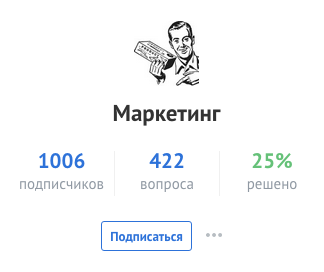
Section "Marketing"
Interest Ask:
- “What website analysis services do SEO specialists use?”
Good day.
Please tell me the sites / web services / programs useful for the analysis and subsequent search engine optimization site used by SEO-specialists. First of all, the analysis tools are interesting, and then everything else.
For example, the KeyCollector is and is actively used with reports from SpyWords.
Similar questions were already, I looked at them, but they were asked a long time ago, and during this time a lot could have changed, deteriorated or new interesting services appeared.
Maybe you should try WooRank and GetGoodRank, although maybe I’m not talking about it)
And as an option - look here
If internal audit is screaming frog, if reference audit then ahrefs + semrush
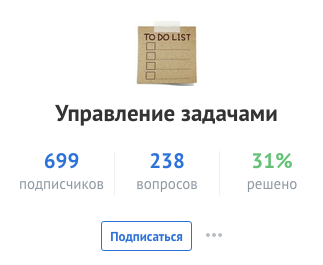
Task Management Section
Interest Ask:
- “What kind of kanban tool do you use?”
Good day.
Currently involved in the development of a tool for managing production processes using flexible methodologies, primarily kanban - kaiten.io.
I would like to understand what tools are currently used by teams? What are the advantages of your instrument that caught your attention? What disadvantages are the most serious for you in your solution?
Trello / write your own.
Kaiten, , , , . , , .
.
, , .
, :
, , (- 3 , , ).
, , . , , .
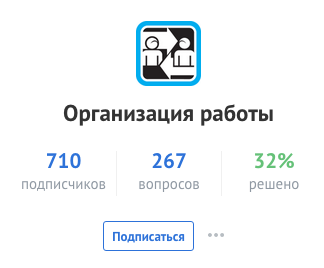
« »
Interest Ask:
— « ?»
— git, composer…
?
, ?
1. IDE
2. xdebug
3. git
4. composer
1. IDE
2. xdebug
3. git
4. composer
5. bower
6. npm/bower
6. less/stulys/sass
7. grunt/gulp/webpack
8. apache/nginx
9. apc/opcache/memcache/varnish etc
10. bootstrap
11. VIM!!!
12. English!!!
13.
14. ,
15.
Ask and learn on the Toaster !
Source: https://habr.com/ru/post/299902/
All Articles
